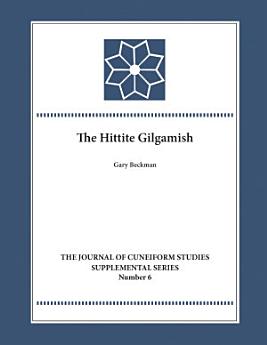The Hittite Gilgamesh
জুন ২০১৯ · Journal of Cuneiform Studies Supplemental Series কিতাপ 6 · Lockwood Press
৫.০star
১ টা পৰ্যালোচনাreport
ইবুক
112
পৃষ্ঠা
family_home
যোগ্য
info
reportমূল্যাংকন আৰু পৰ্যালোচনা সত্যাপন কৰা হোৱা নাই অধিক জানক
এই ইবুকখনৰ বিষয়ে
From the late third millennium BCE on, the adventures of the hero Gilgamesh were well known throughout Babylonia and Assyria, and the discovery of Akkadian-language fragments of versions of his tale at Boğazkoy, Ugarit, Emar, and Megiddo demonstrates that tales of the hero's exploits had reached the periphery of the cuneiform world already in the Late Bronze Age. A century of excavation at the Hittite capital of Hattusa (mod. Boğazkoy) has yielded more textual sources for Gilgamesh than are known from all other Late Bronze Age sites combined. The Gilgamesh tradition was imported to Hattusa for use in scribal instruction, and has been of particular importance to modern scholars in reconstructing the epic and analyzing its development, since it documents a period in the history of the narrative for which very few textual witnesses have yet been recovered from Mesopotamia itself. And it is this very Middle Babylonian period to which scholarly consensus assigns the composition of the final, "canonical" version of the epic. The Hittite Gilgamesh offers a full edition of the manuscripts from Hattusa in the Hittite, Akkadian, and Hurrian languages recounting Gilgamesh's adventures.
মূল্যাংকন আৰু পৰ্যালোচনাসমূহ
৫.০
১ টা পৰ্যালোচনা
লিখকৰ বিষয়ে
Gary Beckman is George C. Cameron Professor of Ancient Near Eastern Languages and Cultures in the Department of Middle East Studies at the University of Michigan.
এই ইবুকখনক মূল্যাংকন কৰক
আমাক আপোনাৰ মতামত জনাওক।
পঢ়াৰ নির্দেশাৱলী
স্মাৰ্টফ’ন আৰু টেবলেট
Android আৰু iPad/iPhoneৰ বাবে Google Play Books এপটো ইনষ্টল কৰক। ই স্বয়ংক্রিয়ভাৱে আপোনাৰ একাউণ্টৰ সৈতে ছিংক হয় আৰু আপুনি য'তে নাথাকক ত'তেই কোনো অডিঅ'বুক অনলাইন বা অফলাইনত শুনিবলৈ সুবিধা দিয়ে।
লেপটপ আৰু কম্পিউটাৰ
আপুনি কম্পিউটাৰৰ ৱেব ব্রাউজাৰ ব্যৱহাৰ কৰি Google Playত কিনা অডিঅ'বুকসমূহ শুনিব পাৰে।
ই-ৰীডাৰ আৰু অন্য ডিভাইচ
Kobo eReadersৰ দৰে ই-চিয়াঁহীৰ ডিভাইচসমূহত পঢ়িবলৈ, আপুনি এটা ফাইল ডাউনল’ড কৰি সেইটো আপোনাৰ ডিভাইচলৈ স্থানান্তৰণ কৰিব লাগিব। সমৰ্থিত ই-ৰিডাৰলৈ ফাইলটো কেনেকৈ স্থানান্তৰ কৰিব জানিবলৈ সহায় কেন্দ্ৰত থকা সবিশেষ নিৰ্দেশাৱলী চাওক।





